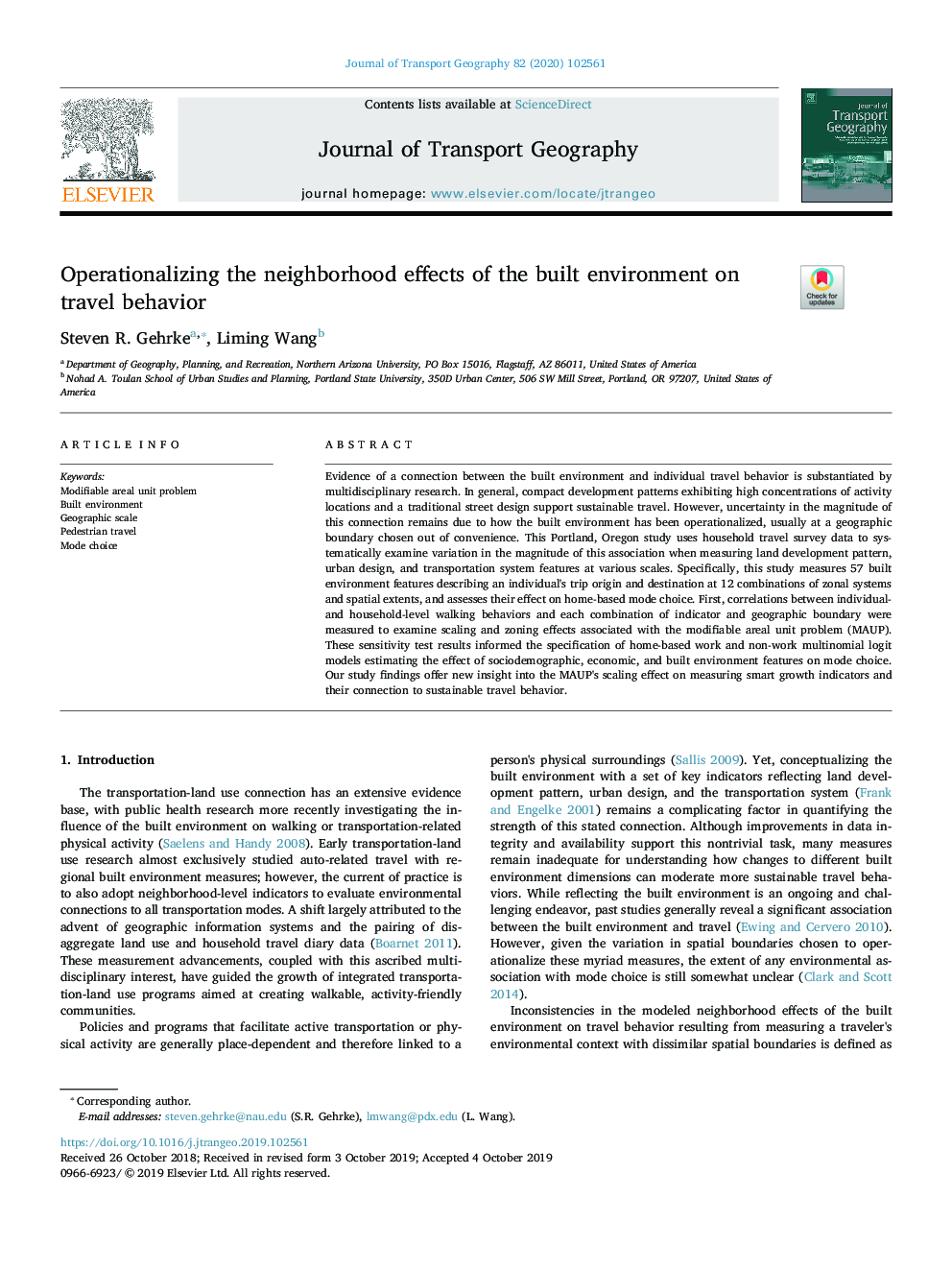| Article ID | Journal | Published Year | Pages | File Type |
|---|---|---|---|---|
| 13466513 | Journal of Transport Geography | 2020 | 12 Pages |
Abstract
Evidence of a connection between the built environment and individual travel behavior is substantiated by multidisciplinary research. In general, compact development patterns exhibiting high concentrations of activity locations and a traditional street design support sustainable travel. However, uncertainty in the magnitude of this connection remains due to how the built environment has been operationalized, usually at a geographic boundary chosen out of convenience. This Portland, Oregon study uses household travel survey data to systematically examine variation in the magnitude of this association when measuring land development pattern, urban design, and transportation system features at various scales. Specifically, this study measures 57 built environment features describing an individual's trip origin and destination at 12 combinations of zonal systems and spatial extents, and assesses their effect on home-based mode choice. First, correlations between individual- and household-level walking behaviors and each combination of indicator and geographic boundary were measured to examine scaling and zoning effects associated with the modifiable areal unit problem (MAUP). These sensitivity test results informed the specification of home-based work and non-work multinomial logit models estimating the effect of sociodemographic, economic, and built environment features on mode choice. Our study findings offer new insight into the MAUP's scaling effect on measuring smart growth indicators and their connection to sustainable travel behavior.
Related Topics
Life Sciences
Environmental Science
Environmental Science (General)
Authors
Steven R. Gehrke, Liming Wang,
